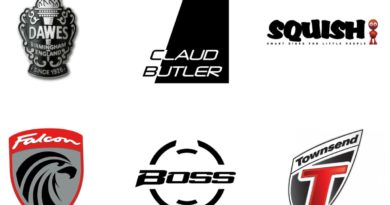Would simplification improve customer service in the bike industry?
Do we do things a certain way, just because that’s how it has always been done? Katya Gasenko, digital marketing wizard, writer and business developer in the cycling industry, examines how fresh blood in the industry can result in new efficient solutions…
Talking to people on a daily basis helps me see the bigger picture and figure out what are the weakest sides of the bike industry and how they may be improved. During multiple calls and meetings we often talk about how important it is to open our doors to people from other sectors not only because of the huge demand for new employees but especially to inject some fresh blood and hear a different, often much more efficient and structured point of view.
Someone said to me regarding the closed situation in our cycling world once: “Inbreeding leads to the reduction in productivity” and I could not agree more. We all should admit that the industry built on passion also has very few regulations, which results in a huge margin of error. Lack of experience in the sectors with much more strict rules, tools, all sorts of KPIs and stuff with time creates a bigger gap between “how we do it” and “how it can be done today”.
What makes a well-functioning company?
A well-functioning company is like a healthy body – you need to take care of all its parts equally. If you only take care of your face, it will become a mask covering all sorts of problems behind it. If you only train your legs, your upper body will eventually give up on you and lead you from small injuries to severe health problems.
It’s the same with a company. It cannot grow and develop based only on the “pretty picture”. Lately I myself, being one of those crazy two-wheel lovers, who believes that the right number of bikes is n+1, became a victim of such an unhealthy not fully-functioning organism with long-term traditions. Of course this article is based on a personal experience, but it is not written for any personal crusade purposes. On the contrary, I hope it will help to look at the “back side” of bike manufacturing from a fresh perspective.
Recipe: How to turn a small issue into a huge problem.
Long story short, I got myself a wonderfully designed and engineered bike, one of those you just cannot pass by without noticing. Finally my “wheels” attracted more attention than my humble self. Unfortunately, it appeared to have an issue that looked super minor and needed very little effort to fix – a disfigured seal and a small part missing. “Easy-pizzy!” – you’d think.
Nevertheless this small thing became a personal challenge for me. That was not because of the lack of people ready to help, but because of the old system of customer service, which many times for many brands showed itself as very inefficient and caused multiple problems such as: a very long time of claim handling, misunderstandings, shipments to wrong addresses, long waiting for repair, etc.
Customer Service schemes
These days we have two major customer service schemes.
First (AKA traditional) – is the most popular with huge bike manufacturers, who have a vast network of distributors and dealers.
It can be presented as a chain with several links, which all have to work properly in order to satisfy client’s needs and do it fast, efficient and in the shortest time possible:
B2B <> B2B <> B2C
which equals
customer <> dealer <> distributor <> manufacturer

Even if all the links do their job well, it takes time to pass information six times!
It can get worse, if we think of a dealer, who has multiple stores and only one person responsible for contacting the distributor. It’s pretty close to a nightmare.
Let’s imagine for a moment that something in this chain goes wrong. One link is broken, not responding, does not have proper knowledge, etc. Here I will use my actual situation to show it as an example.

Impressive huh? Surely, I’m a special pain in the ass, who does not allow “impossible” and “cannot-be-solved” in her lexicon? But the example speaks for itself. We see how a minor issue became a huge problem, which involved many people, wasted a lot of time and didn’t come to any solution in over two months. All of that mess costs money:
- Time (equals money) of every person involved from the business side;
- My time (equals money) as a customer;
- Inability to use my super bike, which led to a purchase of replacement bike (unplanned expense);
- Loss of the trust of a loyal customer (money to-be-earned no more).
Now let’s have a look at the second scheme introduced by companies in the bicycle industry, which have chosen the D2C business model.
 Pic3
Pic3
Here we have a very clean relation between customer and manufacturer:
customer <> manufacturer
Advantages?
- The fewer steps, the less opportunities for errors to occur;
- Less time needed to educate all links of the CS;
- Less money invested in educating all links of CS;
- Less money lost to multiple possibilities of errors;
- More happy loyal clients.
How to improve customer service in the bicycle industry?
Make it simple, make it easy and make it accessible.
We all can go and register our bikes online after the purchase right? We have direct access to the manufacturer in order to get a prolonged warranty. Why shouldn’t we have the same access, when something actually happens?
Instead of sending the customer on the Dante’s Inferno trip even the biggest companies can cut it and add the part of the CRM that will be responsible for the direct complaint filling.
Yes, technology costs money, but innovations in design and engineering of the frames and bike components cost money as well. Investing in bikes without investing in improvement of customer service is like training your legs and hoping that your upper body will eventually catch up. As people deeply involved in sport we all know it never happens. Balance in life, balance in body and balance in business create healthy living and well-functioning organisms. Shall we start balancing?
Katya Gasenko is a specialist in PR and strategic marketing. You can get in touch via LinkedIn:
https://www.linkedin.com/in/katya-gasenko-b00946105/



